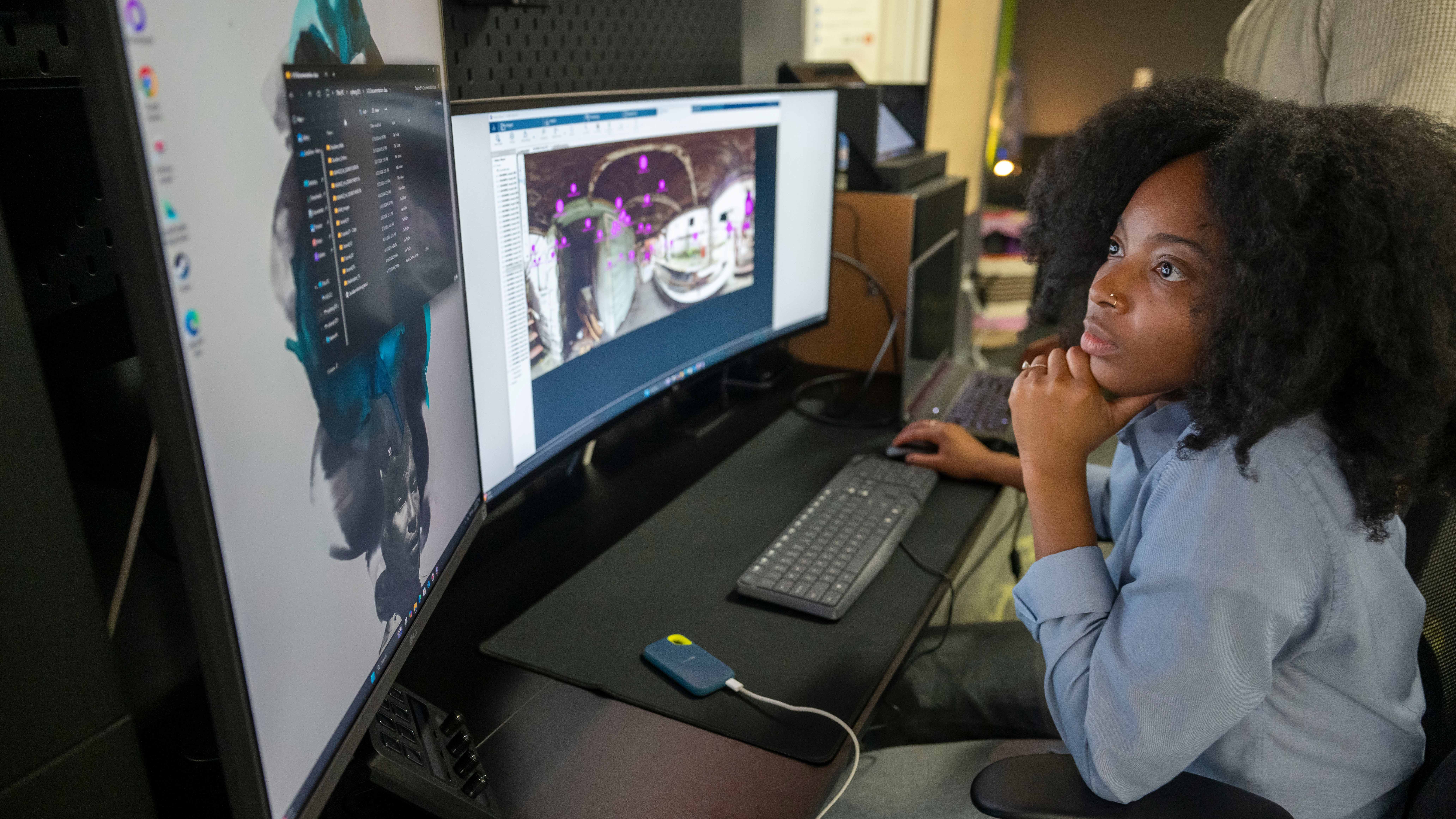Step Into NarraSpace: UMD’s Hub for Immersive Storytelling and Inclusive Scholarship
February 03, 2025

With VR headsets and tactile tools, UMD's new lab is redefining what scholarship can look—and feel—like.
By Jessica Weiss ’05
What does it mean to truly feel the complexity of a human experience—like the layered emotions of diaspora or the unspoken nuances of code-switching? These are the questions being explored at NarraSpace, a new immersive storytelling lab at the University of Maryland.
Located within the Maryland Institute for Technology in the Humanities (MITH), NarraSpace invites scholars and creators—especially BIPOC and queer voices—to explore deeply personal, often indescribable experiences. With tools like virtual reality headsets, spatial reality displays and gaming equipment, the lab is helping scholars push the boundaries of what storytelling—and scholarship—can be.
"We're really asking: What does it take to bring the nuances of human experience into a tangible form?” said Professor of English Marisa Parham, who received a 2024 Teaching Innovation Grant to create the lab. “It might be a sound, a smell or even the feel of something in your hand. These tools allow us to describe, investigate and express stories that are often difficult to talk about outside of literature, music and film.”
Parham stressed the importance of the non-digital tools in the space; NarraSpace features tactile materials like Play-Doh, rocks and kinetic sand that she said can help scholars find new creative outlets for their ideas.
Elizabeth “Lisa” Abena Osei, a doctoral student in English whose research focuses on Black speculative fiction, specifically Afrofuturism and Africanfuturism, is a graduate researcher at NarraSpace. After learning the open-source software Twine through mentorship with Parham, Osei is designing a game that immerses players in Afrofuturist and Africanfuturist worlds, allowing them to experience unique cultures, technologies and narratives.
“I never anticipated taking a digital route with my work, but I truly love it,” Osei said. “There's so much that humanities students can do with their ideas, their stories and their research.”
Osei’s work reflects the lab’s mission to amplify stories that often go unheard in traditional scholarship. At NarraSpace, she has found mentorship and collaboration, presenting her progress to peers and faculty who’ve provided valuable feedback.
Among other current student projects: Christin Washington, a doctoral candidate in American studies, is using “speculative mapping” to look at Caribbean women’s lives in the context of mourning, space and digital infrastructure; and Alice Bi, a graduate student in English, combines the study of poetic form in African American and Asian American texts with touch technologies like interactive projection. Parham, meanwhile, is using the space to model how immersive technologies might work alongside more traditional scholarship.
Beyond individual projects, NarraSpace is fostering community and innovation. This semester, students in Parham’s “Black Digitalities” class will engage with the lab, and next month, artist and creative technologist Ari Melenciano ’14 will lead a workshop on the poetics of motion capture.
“We want to get people thinking with their hands in a comfortable setting with other scholars and artists,” Parham said. “That’s how we ideate.”
*****
Faculty, staff and undergraduate students interested in learning more should reach out to Cassandra Hradil, assistant director of NarraSpace. Graduate students should reach out to Marisa Parham.
Photo by Lisa Helfert.

